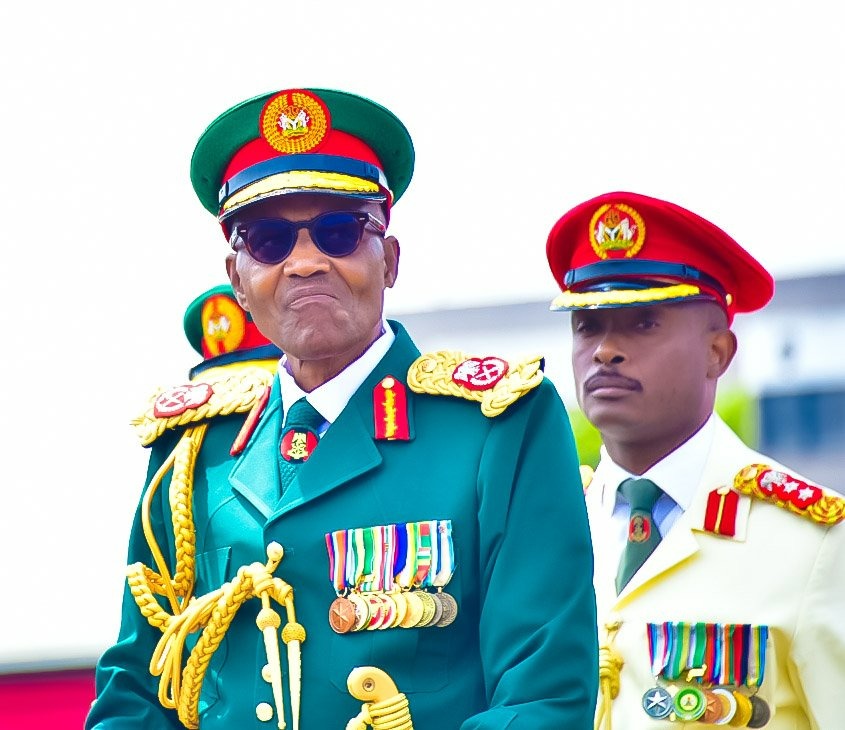
IN his last days in office, the President, Major General Muhammadu Buhari (retd.), has been inaugurating projects across the country to prove the point that he has done well in infrastructure provision. From the near completion of the rehabilitation of three major national highways, to the extension and construction of new rail lines and projects at the seaports and airports, the regime rates itself high. Undoubtedly, Nigeria still suffers a massive infrastructure deficit even as he departs; but compared to his successors in the Fourth Republic, Buhari has done better in improving infrastructure, even though minimally, and at humongous cost and indebtedness.
In the Factsheet on Buhari’s achievements in his eight years in office, the Presidency makes the grandiose claim that Nigeria on Buhari’s watch“is seeing the biggest and most ambitious federal infrastructure programme since Nigeria’sIndependence.”
This claim is debatable; the massive infrastructure roll-out undertaken by the Yakubu Gowon military government, and its successor is reckoned to be in pole position.
Second, Buhari does deserve his credit.He has done better than his three predecessors in the Fourth Republic –Olusegun Obasanjo, Umaru Yar’ Adua, and Goodluck Jonathan.
Third, Buhari’s efforts have not significantly rolled back the country’s massive infrastructure deficit; much more could have been achieved with visionary leadership, doggedness, and creative ability to exploit and maximise available material and human resources.
Fourth, the regime’s touted successes feature mostly rehab of existing roads facilities and completion of inherited ones. The country’s dire need of new infrastructure to meet its exploding population is still far from being met.
Then, Buhari’s projects have come at a heavy cost. He has borrowed at a record level, including for some projects that would have reduced the public debt burden if the environment had been liberalised for massive foreign direct investment and domestic investment, and if the regime had harkened to the clamour to reform the system to give the states and the private sector greater roles in infrastructure roll-out.
Nigeria is still at a tortured junction. Buhari inherited a broken economy in 2015, with internal and external shocks mounting thereafter, and made worse by grossly inadequate and decrepit infrastructure. His promise to the electorate to reverse the dismal outing of his predecessors held out hope.
Today, the situation is only marginally better, especially as the 36 states do very little, the economy is in tailspin and the country is wracked by insecurity and damage to existing public and privately-owned infrastructure.
In December 2022, the World Bank still adjudged Nigeria low on infrastructural development, ranking it at 132 of 136 countries surveyed. It noted that at the current slow rate of development, it would take 300 years to fill the gap!
Buhari’s Minister of Finance, Budget, and Planning, admitted in 2019 that the country needed to invest $100 billion annually (N36 trillion then) to address the deficit, amounting to $3 trillion over the next 30 years.
The government’s Renewed National Integrated Infrastructure Master Plan envisages spending of $2.3 trillion over 30 years at $150 billion per annum.
There are about 200,000 kilometres of roads owned by the federal, states and local governments; most are unpaved, including major inter-state and inter-city highways. Rail is inadequate, with just over 3,700 kilometres of tracks compared to South Africa’s 20,953km, Brazil’s 29,273km and Algeria’s 4,560km.
The airports, despite much borrowing to fix them, are a national disgrace. None of those designated “international” makes the cut. The seaports are also messy, with some shippers opting to use ports in neighbouring West African countries. Despite the government injecting a further N1.7 trillion into the power sector over the last decade, it remains dilapidated, inadequate and a brake on production and investments.
Buhari has some laurels to flaunt. In the railway sector, he moved the 25-year plan envisaged by Obasanjo beyond rhetoric and endless delays. He completed the 156km Lagos-Ibadan Standard Gauge Rail within four years 2017 to 2021; extended the line to the Lagos Port Complex; completed the 186km Abuja-Kaduna Standard Gauge Rail Line.
A notable and commendable accomplishment was the completion of the327km Itakpe-Warri Standard Gauge Rail opened in 2020, 33 years after construction began. As part of this project, there was the full rehabilitation of the Railway Village, Agbor, as well as the construction of a Railway Ancillary Facilities Yard, also in Agbor, among others. Having stalled for over three decades and a crucial plank of the steel development strategy, history will remember Buhari favourably for this.
Unlike his predecessors, Buhari moved to extend the railway complex. The flipside is that he borrowed heavily to accomplish this. While borrowing is inevitable given the huge resources needed for rail, until the last minute, Buhari failed to take the option of a mix of borrowing, private foreign and domestic capital, and states participation to reduce the country’s debt burden and free funds for other areas of needs.
Ethiopia’s $5 billion Grand Ethiopian Renaissance Dam in contrast, is partly funded by crowd funding, domestic bonds, contributions by locals and its diaspora, and by loans from global lenders. Nigeria relied mostly on Chinese loans.
Thus far, the Federal Government paid $1.42 billion in counterpart funding for different railway projects across the country. The Debt Management Office put the entire loan obtained from the China Exim Bank as of Sept 30, 2021, at $2.28 billion, with$500 million for the Abuja Light rail project, $500 million for Abuja-Kaduna railway, and $1.27 billion for Lagos-Ibadan.
Reports hinted that the government might be struggling to service the loan obtained for 15 different railway projects from the China Exim Bank. Some of the projects have suffered commercial viability, among other things.
On roads, the Minister of Works and Housing, Babatunde Fashola, says that the regime constructed 9,290.34km of roads from 2015 to May 2023. He said these were part of 13,000km of roads and bridges “as well as other housing activities” under Buhari’s infrastructural and housing development policies.
Among the projects commissioned virtually on Tuesday were the legacy SNB, which previous governments all variously promised but failed to complete; part of the Kano-Kaduna Expressway, the Loko-Oweto Bridge(Benue and Nasarawa) and the Ikom Bridge (Cross River).
Minuses include the 127-kilometer Lagos-Ibadan Expressway rehab, which has dragged on for so long and caused untold suffering to commuters, residents, and businesses. Now almost completed, Buhari and the irresponsible Ninth National Assembly will receive no accolades from their traumatised victims.
Nigerians rather have the governments of the United States, United Kingdom, and Bailiwick of Jersey, who insisted that a tranche of $311 million of the funds looted by the late Sani Abacha and stashed in their respective countries be exclusively deployed to complete the Lagos-Ibadan, the SNB, and the Kano-Kaduna-Abuja Expressway.
The Presidential Infrastructure Development Fund has reportedly invested over $1 billion on those roads; while Buhari’s Executive Order No.7 2019 on the Road Infrastructure Development and Refurbishment Investment Tax Credit Scheme, has reportedly mobilised about N3 trillion by private companies for projects across the six geopolitical zones in exchange for tax breaks.
The Highway Development and Management Initiative, a public-private partnership initiative, plans to mobilise in its first phase another N1 trillion in private investments into the development and maintenance of 12 roads with combined length of 1,963km.Sukuk Bonds of N600 billion raised since 2017 for more than 40 critical road projects across all six geopolitical zones are also claimed. Like the rail projects, the road projects were also mostly financed by loans.
Buhari made no meaningful impact in the housing sector. While the CBN estimates the national housing deficit at 20 million units by 2019, the Federal Mortgage Bank put it at 28 million units by January. The regime’s chest-beating that 5,000 houses were at various stages of completion across 34 states is therefore laughable. Invariably, private efforts have been trying vainly to fill the gap in the absence of impactful federal and state support.
To address the country’s 7.6 million housing shortfall, in 2014, Indonesia’s president Joko Widodo launched a ‘One Million Houses’ programme to reduce this to 5.4 million.It delivered 699,770 homesin 2025, 805,169 in 2016, 904,758 in 2017, and a hefty 1.13 million in 2018. Moreover, 70 percent of the homes were targeted at low-income households, according to the Oxford Business Group.
India is undergoing a monster infrastructure investment programme with a road component that delivers an average 37km of roads per day and planned to increase its already impressive 6.37 million km road network.
A major black mark for Buhari is the failure to rehabilitate the Apapa Ports road network. But for the intervention of some companies rehabilitating portions, the regime flopped badly. Yet, says the Lagos Chamber of Commerce and Industry, Nigeria loses about N7.6 trillion yearly due to the congestion at the Apapa and Tin Can Island ports and gridlock in the adjoining roads.
Truly, some attempt has been made to improve the airport terminals.The new one at MMIA, Lagos, is however shunned by big operators based on wrong modelling. Again, Buhari waited till the last minute to concession the Abuja and Kano airports, which he had promised to do eight years ago. He resisted plans to privatise all the ports, opting for piecemeal, ever slow concessions.
On balance, Buhari can rightly beat his chest on doing more than other Fourth Republic leaders, but the takeaways are that most of what he did was either rehab of existing infrastructure, completion of old or abandoned ones or extensions. This is commendable as governance is continuous. But he incurred too heavy a debt burden in the process.Total national debt rose last week by N27 trillion with amortisation of borrowings from the CBN.
He also left some critical infrastructure undone or took too long in doing them such as the Apapa Ports link roads, the East-West Highway, Port Harcourt-Aba, and several others across the country.
Given the enormity of the deficit he met, his exertions were not enough to significantly improve Nigeria’s sorry infrastructure situation by his exit date. At best, his bragging rights remain that he did more than his decidedly less impressive predecessors.





